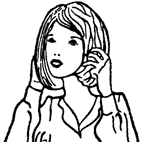Not much to report lately except for two gigs, both at Cafe Oto, about one week apart.
First night: two solo sets, by Rafael Toral and Anthony Pateras. I’d heard some of Toral’s music for guitar and feedback of different types, so this was relevant to my interests. He played three “pieces”, each using different sets of very simple equipment. After the first set I started to vague-out a bit. The first was the most interesting: holding a small powered speaker in one hand, he “played” it with a microphone/light in the other, moving it to and fro to create controlled bursts of feedback. It was reminiscent of a solo improvisation on a violin, in sound and gesture. Unfortunately, it also went on for too long – I think this was because Toral seemed more interested in extracting every possible type of sound out of his instrument than in shaping a musical experience. He later mentioned that he was thinking about jazz saxophone solos while playing, so perhaps this was the problem too.
I’ve known Anthony Pateras for a long time so it was good to hear him play again. He played solo piano, without preparations to the strings or other extraneous sounds (as is often the case with him). The difference in technique between the two musicians was striking, and not just in the obvious way of comparing Toral’s meticulous gestures with Pateras’ frenzied activity. The trademark hyperactive pummelling of the keyboard is nevertheless rigorously constrained, producing sharply defined contrasts in large harmonic blocks of sound as well as more subtle distinctions in texture. His technical agility keeps focussed on one musical idea, which is then expanded and elaborated upon. He also stopped soon enough for the audience to demand an encore.
A few days later I was back at Oto to see Jürg Frey and friends (or “personal army”, as they were described on the night). He’s a clarinettist and composer, another one who’s associated with Wandelweiser. Quiet, pulseless sounds: unlike my previous experience, the usual feeling of hushed stillness had additional depths. Some of Frey’s music that I’ve heard seems, to some extent, a provocation in its refusal to yield to an implied, wider palette of sounds. (This is particularly after hearing R. Andrew Lee play Frey’s piano music.) On this occasion, there were also some surprisingly rich sounds, with an almost playful (on Frey’s terms) exploration of harmonies and instrument combinations.
Performance technique in Frey’s music becomes a matter of mastering a highly disciplined activity, to achieve the extremes of attenuated sounds demanded in the score. Looking back on the three different sets, it became clear that I was hearing differences of technique that applied equally to composition as they did to performance. The opportunity to hear Frey play his own music made this connection much clearer. A more extreme case of performance dictating composition was also presented at the Frey gig. Anton Lukoszevieze’s performance of part of John Lely’s The Harmonics of Real Strings reveals that the harmonic structure of the piece is entirely produced by the systematic execution of a single, extended gesture by the cellist – conceptually simple, but physically difficult.
The same musicians had spent the weekend recording Frey’s music for another release by Another Timbre. It will be interesting to hear the music apart from the theatre of performance.
